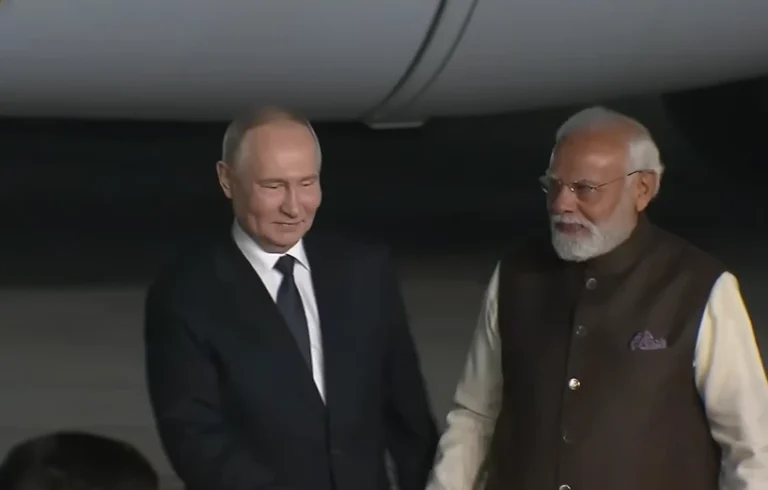Beijing might lower tariffs towards the rest of the world and expand subsidies, with the possibility that other markets, beginning with the European one, would be invaded by Chinese goods at competitive rates.
“If China does not withdraw its 34% tariffs by April 8, 2025, the United States will impose additional 50% tariffs on China, effective April 9,” said US President Donald Trump on social media.
So it has: China now faces a total tax of 125%, which includes the 20% currently in place, the 34% announced Wednesday, and the extra 50%. Beijing responded quickly, announcing on Wednesday morning that duties on US imports will be raised to 84%.
The Economist published an article on its website titled “Why China thinks it can win a trade war with Trump” shortly before the latest announcement, which is certainly useful for understanding why Beijing has decided to respond forcefully – “We will fight to the end” – to the tariffs announced by the American president on April 2.
According to the British weekly, Trump is asking a lot of his geopolitical foe, including stopping the supply of precursors to fentanyl (the opioid that has caused thousands of overdose fatalities in the United States) and assisting in the conclusion of Russia’s war in Ukraine.
The US president also revealed that he does not want to be responsible for the shutdown of TikTok , a Chinese-owned short-video app popular among young Americans. Tesla , the electric vehicle company owned by Elon Musk, a Trump adviser, is vulnerable to retaliation , as it does about a fifth of its business in China. “ This is a huge lever for the US government, unless they ask Elon to leave ,” says Alicia Garcia Herrero of Natixis, a French bank.
Chinese officials may also believe that America will not be able to withstand the inflation and economic discontent caused by Trump’s tariffs . Instead of “fighting to the end,” they may have to fight only until American consumer prices start to rise or employment starts to fall .
Without a doubt, all sides face significant dangers as the stakes continue to rise.
And therefore for the entire world economy.” An escalation of the trade war will need Xi Jinping to do more to sustain the Chinese economy. The possible shock has been compared to the 2007-2009 global financial crisis, which spurred a stimulus package worth 4 trillion yuan ($590 billion).
Xi’s premier, Li Qiang, stated in March that the country was ready for “larger-than-expected external shocks” and was willing to take policies to preserve economic stability. What this implies in reality is still unclear.
The People’s Daily, Beijing’s official mouthpiece and a state-run daily, reported on April 6 that interest rate and bank reserve ratio reduction might occur at any time.
The study also stated that local governments will assist struggling exporters in identifying new sources of demand both domestically and in non-US markets.
Soochow Securities, a Chinese broker, proposed that China lower tariffs on the rest of the globe while increasing export subsidies. This increases the potential that other markets, beginning with Europe, may be invaded by another wave of Chinese goods at competitive prices aided by state subsidies.
However, the Economist warns that Xi is too optimistic about China’s potential to win the tug-of-war. Or that he underestimates the consequences: “Economists fear that stimulation to the actual economy will arrive too slowly, with fragmented and reactive initiatives that will materialise only after a dramatic recession. According to Larry Hu of Macquarie Bank, things will worsen before improving.
The real issue, according to the weekly, is the “decoupling” from America, which China, while pursuing its technological self-sufficiency , has always said it rejected, considering it a way for the West to punish it. “Now, however,” reports the Economist , “there is growing support. Some responses published online today by various well-informed commentators suggest that China is considering suspending all cooperation with America on fentanyl .
Another idea is to ban imports of American poultry and other agricultural products , such as soybeans and sorghum, which come mainly from Republican states. China could also impose restrictions on American services, a sector in which Uncle Sam still has a trade surplus (this also applies to the European Union, ed. ). This would include restrictions on American consultancy firms and law firms still operating in the country. It could also put the intellectual property held by American companies under scrutiny. If “fighting to the end” means falling in line with any new US tariffs, Xi will have to bite the decoupling apple.”
The Economist is sceptical about the chances of a surprise happy ending: “There is nothing that can be done to avoid such a decoupling between the world’s two largest economies.
While Trump’s motives for causing the most significant trade disruption in modern history are unclear, he appears less interested than ever in reaching an agreement with China.
All discussions would be suspended if China enforces its 34% tariff, he stated on his social media site after announcing the fresh steps. Chinese authorities describe it as a “mistake following a mistake” and have not ruled out the prospect of dialogue. Their angry response, however, likely rules out that prospect.”











+ There are no comments
Add yours